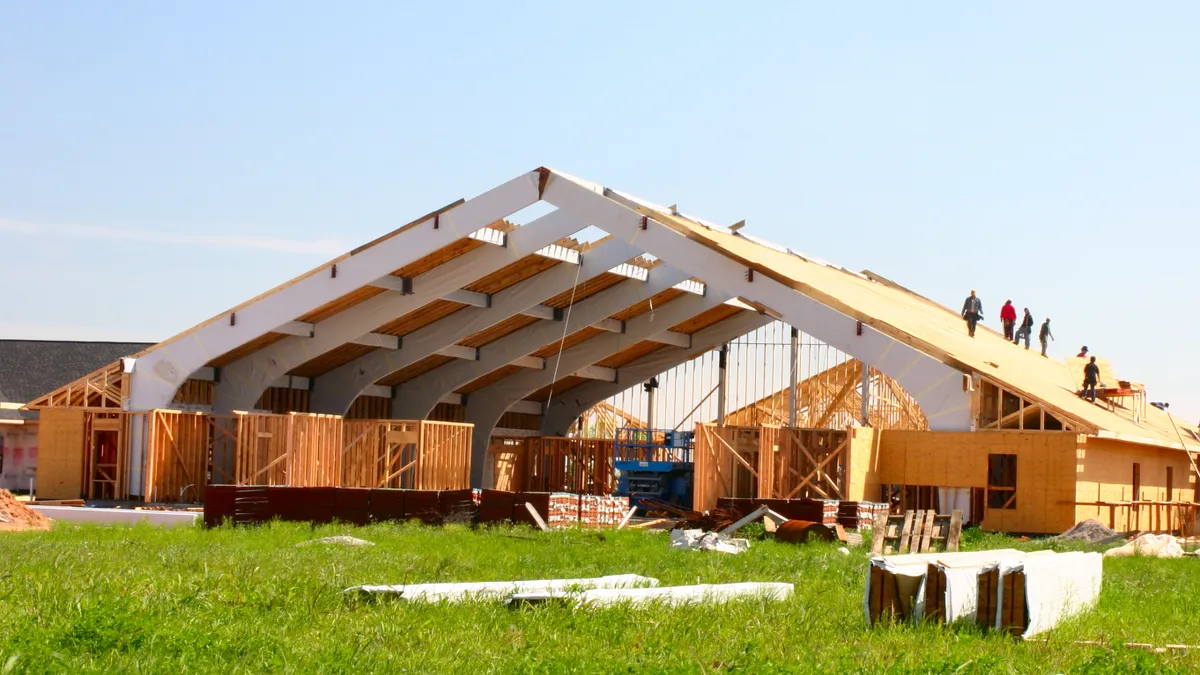Dive Brief:
- While most of the tax deductions and incentives to build climate-friendly structures in the Inflation Reduction Act go to building owners, one area can significantly benefit contractors as well, a construction tax expert said.
- Phillip Ross, leader of the construction industry group at New York City-based accounting advisory firm Anchin, detailed how contractors can earn up to a $5-per-square-foot tax deduction (increased from $1.88 currently) for certain projects under the new law starting in 2023.
- Contractors can qualify for the full deduction by designing and installing qualified energy-efficient systems in certain buildings, if they also meet prevailing wage and apprenticeship requirements. “If you can take this deduction, it’s really found money,” Ross told Construction Dive.
Dive Insight:
The expanded tax benefits come from changes to the 179D energy efficiency deduction, which has been in place since 2006, included in the IRA.
Previously, only commercial building owners or the designers of energy efficient systems in government-owned buildings qualified.
Now, designers of lighting, HVAC or building envelope systems in structures owned by other tax-exempt entities such as nonprofits, religious groups and educational institutions can also qualify. That increases the number and types of projects contractors can work on and get the deduction.
The main thing to know, Ross said, is to make sure the government owner or tax-exempt entity assigns the deduction to the contractor up front, which they need to do for contractors to get the perk.
“It’s really more of an art to negotiate that allocation letter in the beginning to be able to get this benefit,” Ross said.
Other requirements
The changes also lower the threshold for energy improvements needed to qualify. Under the old law, a building had to show a 50% energy savings over a benchmark structure. Now, the starting point is half that — a 25% savings — which means even buildings that are just somewhat more efficient also qualify.
Of course, this being part of the U.S. tax code, the devil of achieving the full deduction is in the details.
The base deduction now starts at 50 cents per square foot for the 25% energy savings threshold, and increases by 2 cents per square foot for each percentage point above that, up to $1 per square foot, Ross said.
But contractors can earn an additional “bonus” deduction if they pay prevailing wages and meet apprenticeship requirements on these jobs. This bonus deduction starts at $2.50 per square foot at the 25% threshold, and increases 10 cents per square foot beyond that, up to the $5 maximum.
“If you're a contractor, architect or engineer, and you're working on a government or not-for-profit building, they're really encouraging you to pay prevailing wages to qualify for this maximum benefit,” Ross said.
The key in that situation is to calculate the best combination of tax savings and increased wage costs on a project to come out ahead as a contractor, according to Ross.
“Depending on the project, depending on the size and depending on the components, you could evaluate how much the additional tax deduction would be, versus your additional labor expense,” Ross said.













